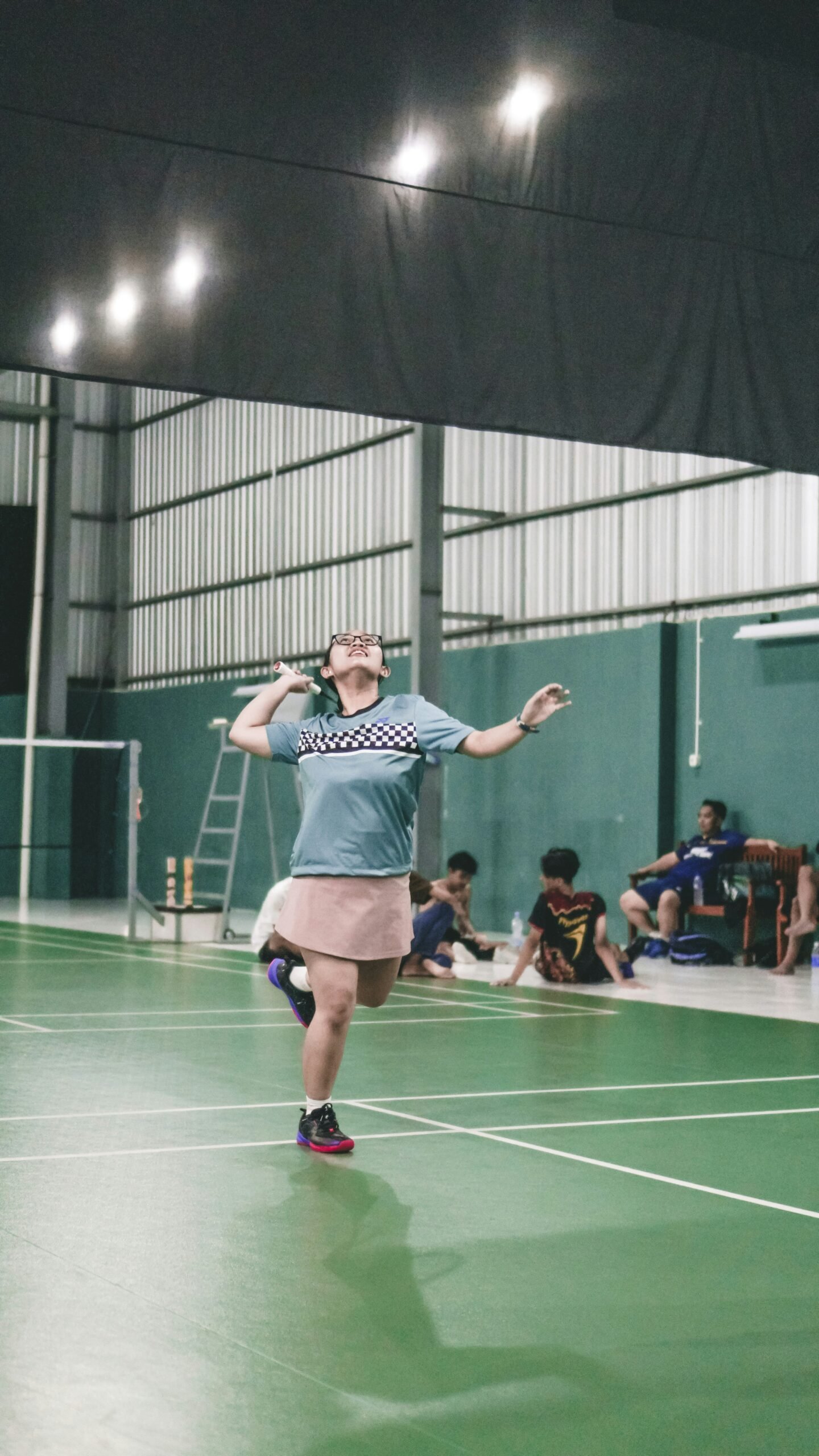Introduction to Virtual Races
Virtual races have emerged as an innovative and flexible alternative to traditional running events, allowing participants to engage in competitive running from virtually anywhere. Unlike conventional races that occur at a specific time and place, virtual races enable runners to complete a designated distance on their own schedule, often within a predetermined time frame. This distinction provides a unique advantage for those who prefer the freedom of choosing their own route and timing, thus accommodating various personal commitments and travel restrictions.
The prevalence of virtual racing gained significant momentum during the COVID-19 pandemic, when health and safety concerns led to the cancellation or postponement of many in-person events. As a result, race organizers adapted by creating virtual formats that allowed runners to continue participating in their favorite activities. This transition not only preserved the competitive spirit of racing but also connected individuals during a time of social distancing. Runners could still receive medals, track their times, and share their experiences online, which fostered a sense of community despite physical separation.
The Benefits of Virtual Racing
Virtual racing has emerged as a popular alternative to traditional in-person events, offering numerous advantages for runners of all levels. One of the primary benefits is the flexibility in race timing and location. Participants can choose when and where they complete their race, whether it be on a familiar local route, a scenic park, or even on a treadmill. This flexibility allows runners to fit their racing schedule into their busy lives, making it easier to participate without the constraints of travel or specific event times.
Another significant advantage is the ability to run at one’s own pace. Unlike traditional races, where the competitive atmosphere can sometimes induce pressure, virtual races allow individuals to set their own goals and run in a way that suits their personal fitness levels. This inclusive environment encourages more people to engage in running, enabling newcomers to build confidence and improve their skills at a comfortable pace.
Additionally, virtual racing fosters a sense of connection within the global running community. Participants can share their experiences and results through online platforms, creating an engaging environment that encourages camaraderie, motivation, and support. Social media and various running apps facilitate interaction, allowing runners to connect with others from diverse backgrounds and locales. This enhanced sense of community is vital for many, helping to combat feelings of isolation that can accompany solitary workouts.
Moreover, virtual races usually have lower entry fees compared to traditional events, making them more accessible to a wider audience. This affordability enables more people to participate, regardless of their financial circumstances, ultimately promoting a healthier lifestyle. With the combination of flexibility, personalized pacing, community engagement, and cost-effectiveness, virtual racing is paving the way for a more inclusive and connected running experience.
How Virtual Races Work
Virtual races have gained significant traction in recent years, primarily due to their flexibility and the advancements in technology that facilitate a seamless racing experience. The logistics behind virtual racing are designed to cater to a diverse community of runners, enabling participants to engage from virtually anywhere in the world. The registration process for these events typically begins online, where participants can sign up through dedicated websites or mobile applications. Upon registration, runners often receive a digital race packet that includes essential information such as race guidelines, an e-bib number, and sometimes a medal or race t-shirt that can be mailed to them post-race.
Tracking methods have evolved significantly, with various options available to participants. Many race organizers utilize mobile apps that allow runners to record their time and distance directly on their smartphones. Additionally, GPS-enabled watches and fitness trackers play a vital role in ensuring accurate tracking of a runner’s performance. These devices not only provide real-time metrics but also enable participants to share their achievements with friends and family, further fostering the community spirit that is crucial in the running world.
Once the race is completed, participants are typically required to submit their results within a specified timeframe. This can be done through the same apps used for tracking, or through online portals set up by the race organizers. Runners simply enter their times, which are then verified and compiled to generate an official leaderboard. The technological aspects of virtual races not only streamline the process but also enhance the overall experience, allowing runners to feel connected to their peers despite physical distances. Thus, virtual racing represents a convenient and innovative way to participate in organized running events while embracing the spirit of community engagement.
Building Community Connection
The advent of virtual races has transformed the landscape of running, offering a unique platform for fostering community connection among participants, regardless of their geographical location. Traditionally, races were events that brought people together physically, creating a shared experience filled with camaraderie and motivation. However, virtual races have effectively bridged distances, allowing runners to connect in meaningful ways without being in the same physical space.
One prominent aspect of virtual races is the utilization of social media as a powerful tool for engagement. Participants are encouraged to share their running experiences through platforms like Instagram, Facebook, and Twitter. This sharing not only amplifies the excitement surrounding a race but also enables runners to feel a sense of belonging within a larger community. By posting updates, photos, and personal stories, individuals engage in dialogue with fellow participants, providing encouragement and fostering a supportive atmosphere. Runners can easily celebrate each other’s achievements, such as personal bests or race completions, nurturing motivation across the community.
Moreover, online leaderboards have become a staple feature of many virtual races. These platforms allow participants to track their progress and compare their results with others, effectively creating a competitive yet friendly environment. This element of competition serves to inspire individuals to push their limits and achieve personal goals while simultaneously fostering a sense of connection through shared experiences and outcomes. Many runners find motivation in seeing their names alongside others, reinforcing the idea of a community that celebrates collective achievements.
Additionally, many virtual races organize online meetups, webinars, and training sessions, further enhancing community interaction. These gatherings provide opportunities for participants to connect on a deeper level, discussing training tips, sharing experiences, and offering peer support. By embracing technology, virtual races not only retain the spirit of community found in traditional racing but also expand it, creating new avenues for connection in the running world.
Challenges of Virtual Racing
As the popularity of virtual races continues to soar, participants are likely to encounter several challenges that can hinder their overall experience. One of the primary difficulties is motivation. Unlike traditional races that offer a palpable atmosphere with cheering crowds and an organized environment, virtual races can often feel solitary. This lack of external encouragement may lead to decreased enthusiasm for training sessions and event participation. To combat this, runners might benefit from setting up personal rewards, joining virtual training groups, or participating in online challenges that foster a sense of competition.
Another significant challenge associated with virtual racing is the feeling of isolation. Many runners participate in events not only for physical activity but also for social interaction and camaraderie with fellow racers. The absence of these social ties can make virtual events feel less engaging. To mitigate feelings of loneliness, individuals can utilize social media platforms to connect with others, share experiences, and even run with friends through live streaming or video calls. Engaging with a running community online helps bridge the gap created by physical distance, enhancing the overall experience.
Technical issues constitute a further barrier for those involved in virtual races. These difficulties often involve tracking devices malfunctioning or unreliable apps that fail to provide accurate data. Frustration can arise from missed submissions or inaccurate timing, which can impact motivation and enjoyment. To minimize these concerns, runners should test their equipment and software ahead of the race, familiarize themselves with the required technological tools, and ensure they have a backup plan in place. This preparation helps streamline the virtual racing experience and allows participants to focus on the joy of running, rather than stress about technology.
Success Stories from the Virtual Racing Community
The emergence of virtual races has led to numerous inspiring stories within the running community, showcasing the tremendous positive impact these events have had on individuals and groups. Many runners have found that participating in virtual races not only brings a sense of accomplishment but also fosters a deep connection with fellow enthusiasts, despite the physical distance. One such runner, Sarah, a longtime marathoner, shared her experience of running a virtual 10K for a local charity. She was amazed by the outpouring of community support, with friends and family participating from various locations, all contributing to fundraising efforts that far exceeded her expectations.
Similarly, Mark, who transitioned from traditional races to virtual ones, experienced a renewed sense of motivation. During uncertain times, he decided to challenge himself by signing up for multiple virtual events over several months. This not only helped him to maintain his training regimen but also allowed him to connect with runners worldwide through social media platforms where they shared their experiences, training tips, and race-day preparations. His journey became a source of inspiration for many in his circle, proving that even in challenging times, community spirit can thrive.
Additionally, the concept of virtual races has paved the way for unique initiatives, like the “Run Together” movement, where participants from different corners of the globe come together for a common cause. This event not only emphasizes personal achievements but also highlights the essence of collective action. Runners across various time zones coordinate their efforts, sharing their accomplishments and encouraging one another online. These stories exemplify how virtual racing creates new opportunities for runners, enhancing a sense of community while promoting health and well-being. Through shared experiences, runners are not only able to achieve personal milestones but also build lasting relationships that contribute to the overall strength of the running community.
The Future of Racing: Virtual vs. In-Person Events
The landscape of racing has undergone significant transformations, especially post-pandemic, leading to increased discussions about the future of both virtual and in-person events. As many runners now find themselves accustomed to the convenience and flexibility that virtual races provide, the question arises: will this trend continue, or will in-person events reclaim their lost prominence? Virtual races, which allow participants to run from any location at their convenience, have certainly opened new avenues for accessibility and inclusivity. They often feature various formats, enabling runners of all skill levels to take part without geographical constraints.
On the other hand, in-person races have long been cherished within the running community for fostering camaraderie and a sense of shared experience. The excitement of congregating with fellow runners at the starting line, the thrill of competition, and the communal atmosphere of race day remain unmatched experiences. Furthermore, many runners thrive on the structured environment of in-person events, which provide support stations, medical assistance, and the motivating presence of spectators. While these elements contribute significantly to the in-person experience, they also introduce logistical challenges such as the need for extensive planning and potential cancellations due to unforeseen circumstances.
As the world adjusts to the current reality, it is plausible to envision a coexistence of both formats. Hybrid events that combine virtual participation with in-person gatherings may emerge, allowing greater flexibility for participants. This duality could attract more runners, catering to diverse preferences and needs. Ultimately, the evolution of running events hinges on striking a balance that appreciates the strengths of each format, ensuring that the running community remains engaged and connected irrespective of the challenges that lay ahead.
Tips for Running a Successful Virtual Race
Participating in a virtual race can be an exhilarating experience, especially for those attempting it for the first time. To ensure a successful endeavor, runners should focus on several critical preparation strategies. First and foremost, developing a structured training plan is essential. Depending on the distance of the virtual race—whether it’s a 5K, 10K, or a half-marathon—runners should gradually increase their mileage while incorporating various types of workouts, such as speed intervals and long runs. This balanced approach not only builds endurance but also enhances overall fitness.
On race day, runners should prioritize preparation by selecting an appropriate route, ensuring it provides a safe and enjoyable running environment. Prior to the event, conduct a detailed assessment of the chosen course. Identify potential distractions, surfaces, and any elevation changes that could affect performance. It is advisable to consider weather conditions at the time of the race; adjust attire and hydration strategies accordingly. Furthermore, runners should practice fueling strategies during their long training runs, helping them understand how their bodies react to different energy sources.
Setting personal goals is another crucial aspect of participating in a virtual race. Whether aiming for a specific time or simply enjoying the experience, these objectives can motivate participants to push their limits. Moreover, to foster a sense of community, runners can connect with others virtually. Utilizing social media platforms, joining online running forums, or participating in group challenges can facilitate interactions with fellow participants. After the event, sharing experiences through blogs or social posts allows runners to celebrate achievements and encourage others. Engaging with the running community enhances the feeling of connection, even at a distance.
Conclusion: Embracing the New Norm
In recent years, the running community has experienced a significant transformation with the advent of virtual races. These innovative events have emerged as essential alternatives, especially in times when traditional race formats may not be feasible. Virtual races encourage runners to engage with their peers while accommodating diverse schedules and locations. By allowing participants to complete their race at their convenience, virtual racing fosters a flexible approach to training and competition, making running more accessible to a broader audience.
Moreover, the integration of technology has enhanced the virtual race experience. Tools such as mobile apps and fitness trackers have enabled runners to share their accomplishments, track their times, and cheer each other on from a distance. This connectivity is vital for maintaining the camaraderie often found in physical races, ensuring that runners continue to support one another even when they are miles apart. The use of social media platforms further amplifies this effect, as runners can celebrate their achievements and participate in challenges that resonate with the community.
Embracing virtual races not only encourages individual growth but also cultivates resilience within the running community. By adapting to these new formats, runners can maintain their fitness goals while enjoying a sense of belonging and motivation. The shift towards virtual racing signifies a commendable response to changing circumstances, demonstrating that the spirit of running remains strong despite the challenges that may arise.
As we look to the future, it is clear that the running community has an exciting journey ahead. By embracing virtual races, runners are not only continuing their commitment to health and fitness but also reinforcing the bonds that unite them. In summary, the rise of virtual races embodies a progressive adaptation that ensures the vibrancy and connectedness of the running community endures.







+ There are no comments
Add yours